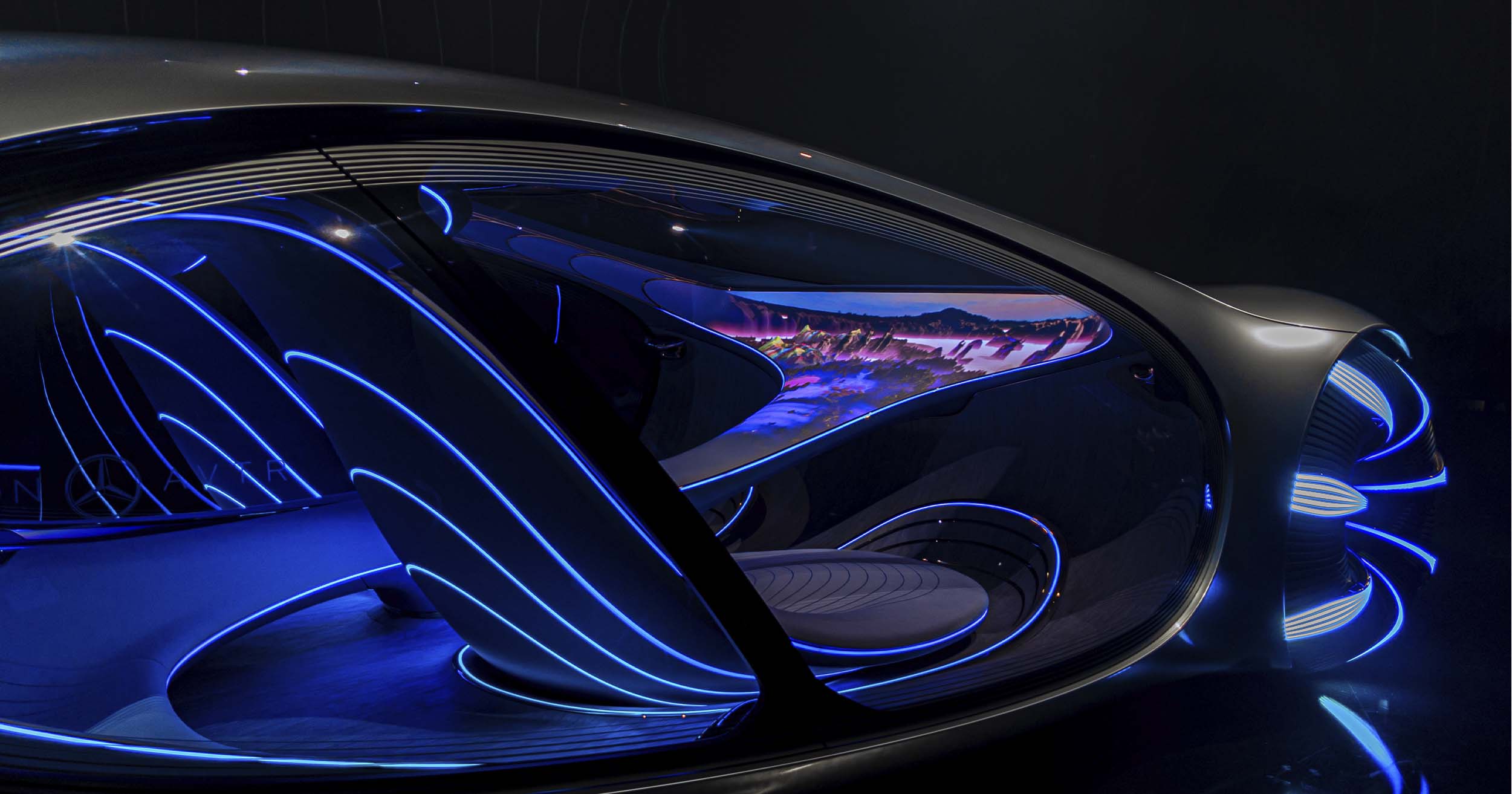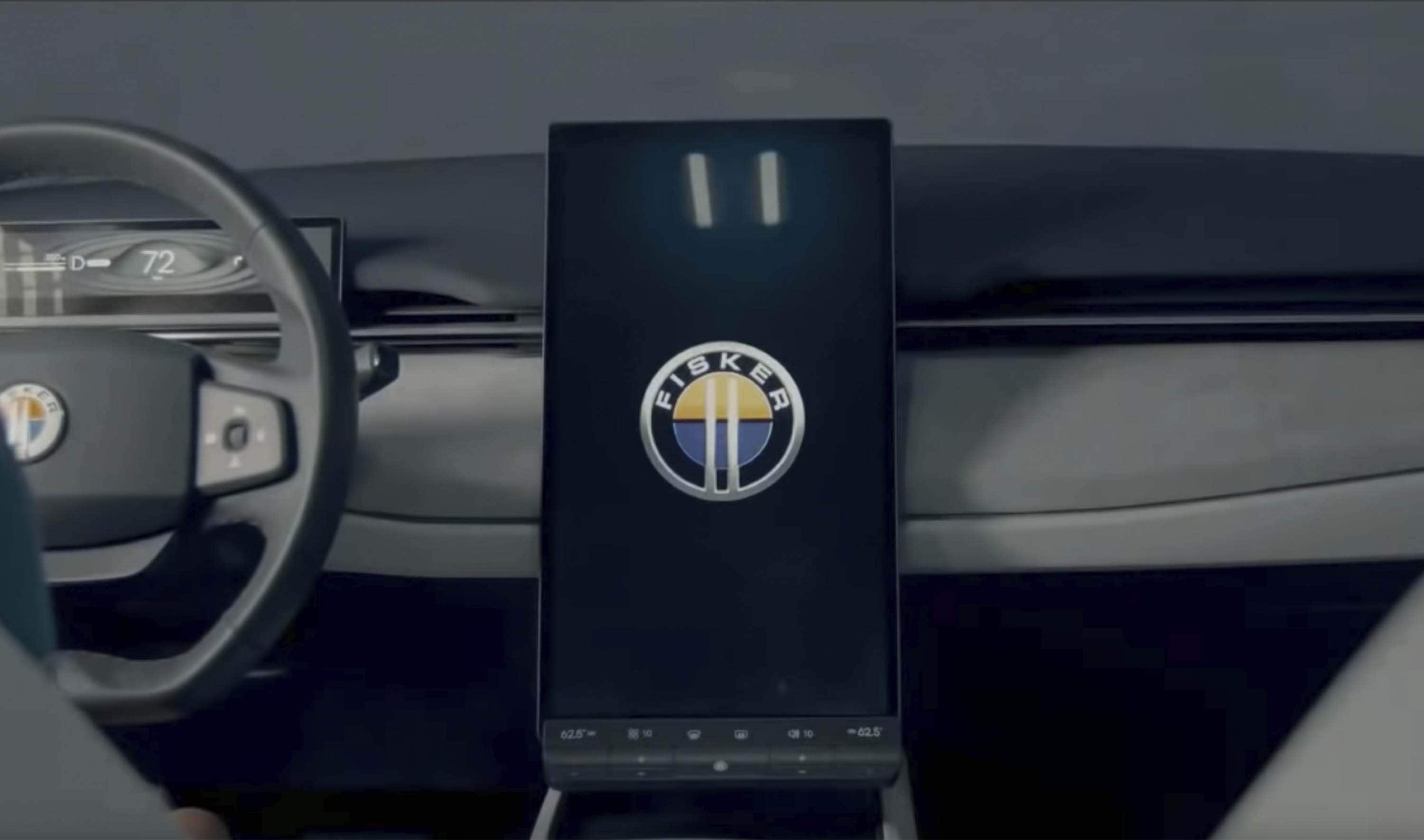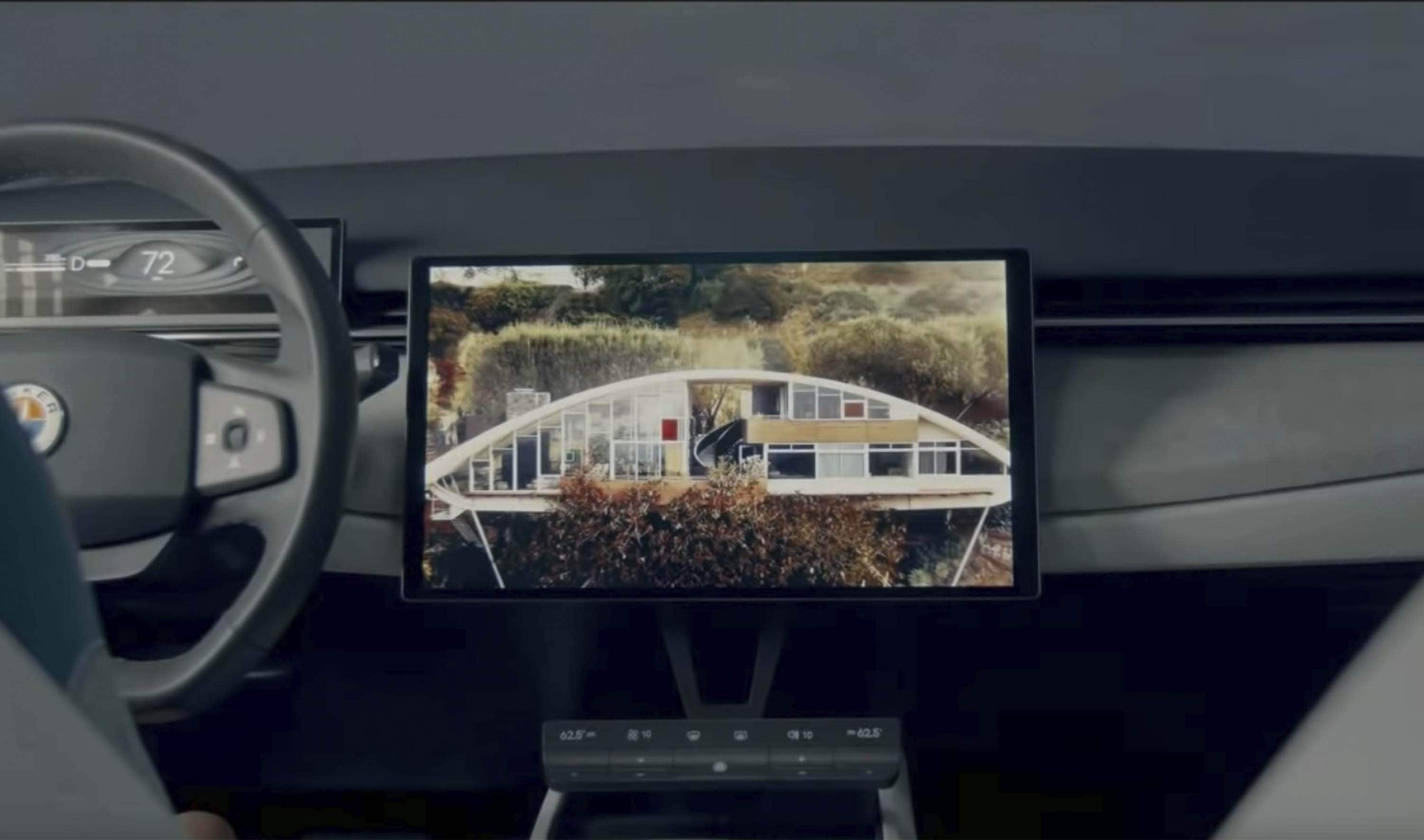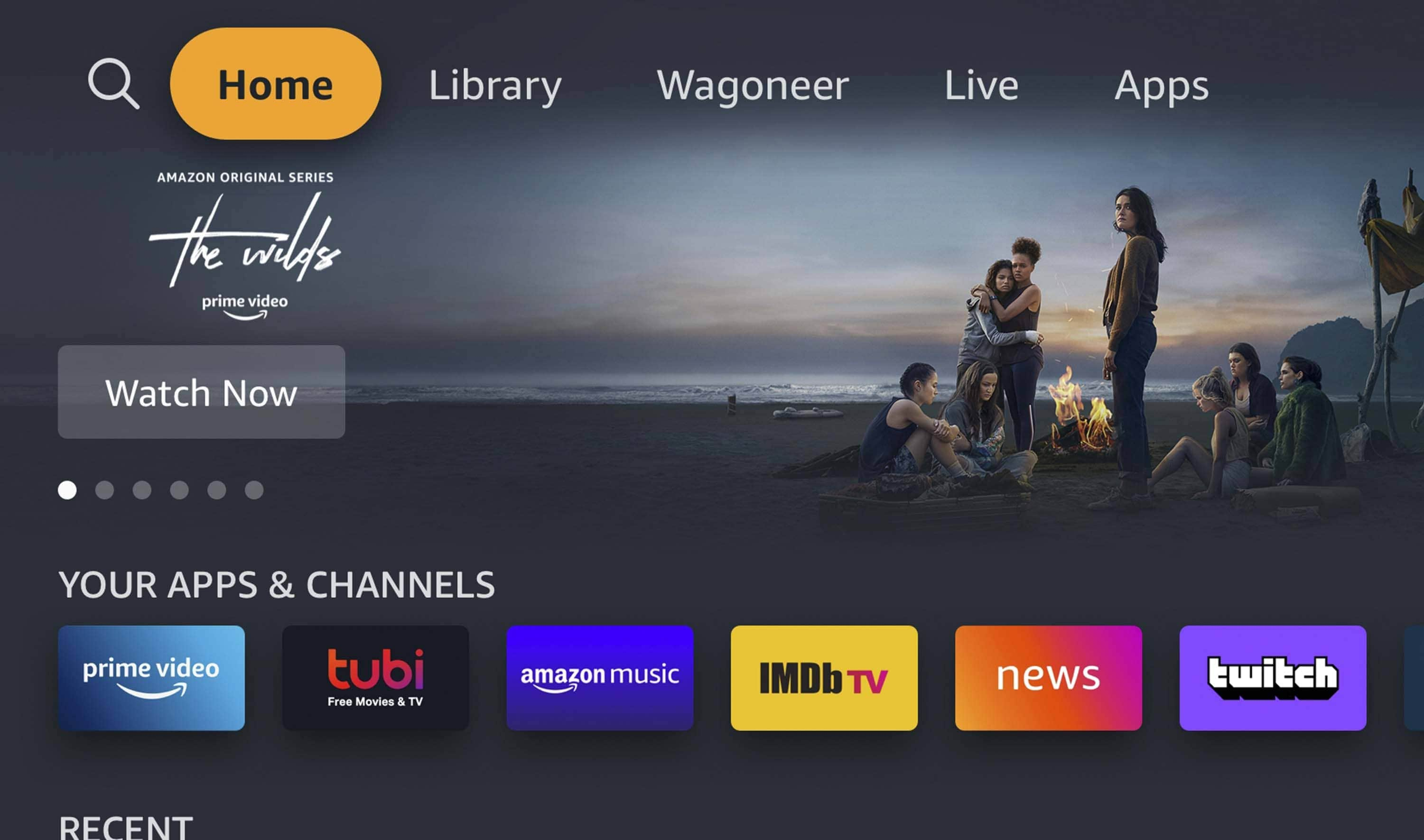
Due to the coronavirus pandemic and the raging Omicron variant, CES is unable to go ahead exactly as planned this year. While the event is still happening, in-person and virtually, many well-known tech companies, TomTom included, have decided not to attend. But we’re not letting that get in the way of our coverage of the event!
Every once in a while, an idea comes along that makes us all wonder why hadn’t anyone done it sooner? Today, I ponder that very notion as I bask in the majesty of the Fisker Ocean’s rotating central display.
Fisker’s upcoming EV, the Ocean, has a 17.1-inch central stack display that rotates and has what the company calls “Hollywood Mode”. It allows drivers and passengers to choose between portrait or landscape orientation based on what they’re using the screen for.

The Fisker screen in its default portrait mode. At the touch of a button the driver and make it rotate so it’s landscape. Much better for watching a movie while you recharge. Credit: Fisker
According to the FAQ section on Fisker’s website, the rotating display will be a feature on the Extreme and One spec levels. When driving, the screen will default to what the company calls “Control Mode”, the preferred orientation for navigation and general infotainment duties.
When parked up, at a charging point for example, the screen can rotate to “Hollywood Mode”, also known as landscape.

The Ocean’s screen in landscape. The screen was first seen as part of the production vehicle debut at the L.A. Autoshow last year. Fisker has reportedly filed a patent for the swiveling display. Credit: Fisker
It’s a wonderfully simple concept. We keep hearing about how drivers expect to be able to take their digital lives into their vehicles and how they want their cars to be more like phones. A central screen that rotates like a smartphone, that’s the closest thing we’ve got to a phone experience in a car since, well, integrated handheld car phones.
The steady proliferation of larger screens, more powerful infotainment systems and phone connectivity has brought much more phone-like functionality to the car. But we’re still bound by the physics of that central screen being fixed in its orientation, until now.
Even though Fisker is filing a patent on the idea, it’s not the first time that we’ve seen a rotating display inside a vehicle. In August last year, Motor1.com reported that Mitsubishi Electric was testing a rotating infotainment system in its Acura MDX. According to Mark Rakoski, Mitsubishi’s VP of advanced engineering, the idea came from user preferences and that some apps are better viewed in landscape and some better viewed in portrait. Which I’m sure is what Fisker is going for here too.
BMW’s Theater Screen
Even though the company pulled out of being there in-person, BMW is showing off its “Theater Screen” concept as part of its virtual CES presence this year.
Cars are becoming about a lot more than just driving. For BMW, it sees that they have the potential to become little cinemas on wheels. In an interview cited by BMW Blog, Pieter Nota, BMW Board Member that oversees sales and marketing, talked about the screen saying, “It really gives an immersive, cinematic experience in the vehicle”.
It’s unclear if this technology is just a concept or planned for production. If it is going to go into production, we should probably expect to see it in BMW’s more luxury-oriented vehicles like the 7 Series first.
Amazon Fire TV… in a car?
Stellantis, the car maker that spawned from the marriage between Fiat Chrysler Automotive and Groupe PSA, is also going digital this CES.
Alongside a host of vehicle announcement, Stellantis’ Jeep was gearing up to show off its award winning Wagoneer and Grand Wagoneer vehicles which have Amazon Fire TV built in. This gives drivers, and passengers, access to Amazon’s suite of entertainment apps such as Prime Video, Amazon Music, Twitch and IMDbTV. What was I saying about cars becoming cinemas on wheels?

Amazon Fire TV in a car means you can start watching your favorite Prime show in your house, and then pick it up in vehicle. Drivers will only be able to watch when the car is parked.
Content is displayed on screens in the back of the front headrests for rear. Though for CES, focus is on the more unique front passenger screen, which has a filter to prevent the driver from becoming distracted while the vehicle is in motion. We’ve seen plenty of entertainment screens for rear passengers and large central screens for everyone else, but as screen real estate in-vehicles increases, expect to see more front passenger-oriented screens that feature function controls specifically for co-driver duties such as navigation and audio.
Even more novel, is that the system comes with a Fire TV for Auto-specific remote control which gives passengers even more control over how they access content on the go. It has Amazon Alexa built in and using a dedicated button on the remote, passengers can control vehicle functions such as climate, maps and more.
Sony’s Vision-S with more screens than a house
Japanese electronics maker Sony unveiled another car in its Vision-S concept lineup that it first unveiled a couple of years ago. As you’d expect from a company that knows a thing or two about making electronics, its latest vehicle, the Vision-S 02 is packed full of screens.
So many screens, that it seems developers will have more space than they know what to do with. An exciting prospect, and a car I’d probably rather be a passenger in than drive.

The Sony Vision-S has plenty of screens. It begins to beg the question, what will we do with all those pixels?
The Vision-S 02 is just a concept for now, but Sony says it will establish Sony Mobility Inc., in spring of this year, so it sounds like the car could go into production.
Screens everywhere
Screens in cars are nothing new, and last year’s virtual CES in 2021 demonstrated that. Screens started getting bigger, wider, more detailed, more reactive and found themselves in more places in the vehicle than ever before.
However, with Fisker’s patent pending rotating screen, Jeep’s Fire TV ready Wagoneer and Grand Wagoneer and BMW’s ambitious yet realistic Theater Screen concept, this year’s showing feels more like we’re moving from wild concepts into real-world applications.
This, though, is creating a unique challenge for the industry: how to design and build these in-vehicle experiences. As we know, what it’s like to be in a car, to experience it, is becoming as important, if not more important, than what the car is actually like to drive.
Carmakers have long fought with complex and long-winded development cycles and have been up against it when it comes to making the in-vehicle experience. Thankfully, companies like TomTom are coming up with solutions to this challenge. Digital cockpit platforms and solutions are providing carmakers with development environments that help them make their infotainment systems in less time and with less cost.
For example, TomTom's in-vehicle tech comes ready, “out of the box”, meaning that developers can add that functionality to their digital cockpit quickly and easily, with native support. The future’s looking pretty good, in-vehicle at least.
People also read
)
Who and what is CARIAD? What you need to know
)
What should we expect from the next 12 months of mobility tech?
)
Meet the devs that coded their way out of the coronavirus chip shortage
* Required field. By submitting your contact details to TomTom, you agree that we can contact you about marketing offers, newsletters, or to invite you to webinars and events. We could further personalize the content that you receive via cookies. You can unsubscribe at any time by the link included in our emails. Review our privacy policy. You can also browse our newsletter archive here.
)